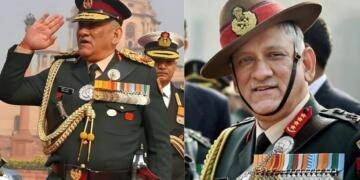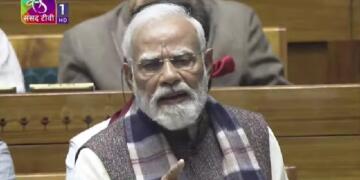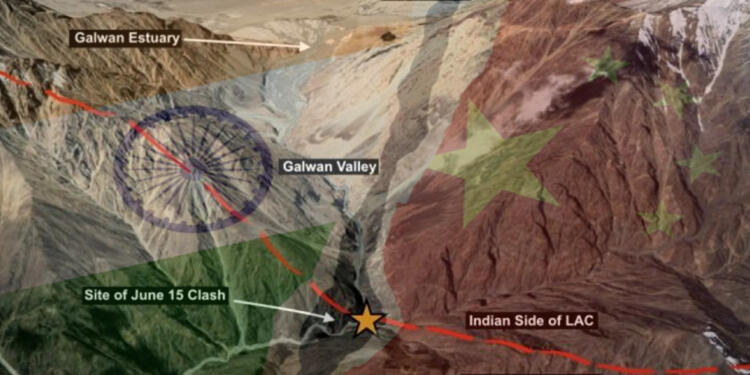Two summers back on this day, the Chinese Communist Party (CCP) and its leaders sitting in the Politburo offices of Beijing thought it a prudent decision to attack India unprovoked in the Galwan Valley, Eastern Ladakh, near the Line of Actual Control (LOC). The skirmishes started on a small scale but by June, China escalated the situation and its transgression to an extent that it orchestrated a blind attack on the Indian army. However, this attack proved to be the tipping point as India simultaneously seized the initiative, narrative and control of the rules of engagement in the coming years.
The June 15 incident happened in the backdrop of a disengagement process, ten days after a Corps Commander-level meeting between the two sides and nearly a month after the first skirmish near the border areas. It was in accordance with this disengagement process that the Chinese dismantled Observation Post at Patrolling Point-14 (PP-14), but the Post came up again overnight on June 14. The 16 Bihar Infantry Battalion led by Late Colonel Santosh Babu was required to ensure that the Chinese removed this Post.
However, the Chinese soldiers, threatened by the authority and control of Colonel Santosh Babu hurled Chinese expletives at him and started the brawl which paved way for an hours-long clash. The Indian Army became furious at their Commanding Officer being disrespected by the Chinese. After all Indian soldiers have utmost affection for their Commanding Officers. To see one’s Commanding Officer getting disrespected is no less than watching your parents getting abused.
Indian soldiers avenging the death of their CO
Thus, the 16 Bihar infantry troops famous for their ruthlessness and ability to beat the opposition to pulp, pounced upon the Chinese and engaged in fistfights that lasted for half an hour. There were injuries on both sides, but the Indian side prevailed and the Observation Post was reduced to ashes. However, the PLA had already invited the wrath of the Indian Army by assaulting Colonel Santosh Babu who was hit by a stone.
Reports suggest that Indian soldiers entered a fit of rage where some started smothering PLA troops with bare hands while others snapped the necks of PLA soldiers like they were twigs.
The iron rods and spiked nail bats used by the Chinese soon fell into the hands of the Indians. Heavy casualties were inflicted on the Chinese. While India was quick to admit 20 fatalities due to the bloody clash, China – which suffered a much higher quantum of damage chose to cover up the entire clash, pin its blame on India, and hide the reality of dead Chinese soldiers from its people.
China hiding casualty numbers
It was only in February last year – seven months after the clashes took place, that the CCP admitted a meagre four fatalities. Thereupon, as reported by TFI, Chinese state media outlets Xinhua News and Global Times reported an additional death due to the clashes, taking the “official toll” to five.
However, several international outlets, including the US, Russian and Australian publications have claimed that China lost a much higher number of troops in the conflict—with one report putting the number of casualties in the high 40s.
Video of Galwan clash posted by China, see how Chinese soldier are flowing in stream of river still they accept only 5 casualtypic.twitter.com/h08qek4Lgn
— Enemy Slayer (@EnemySlayer24_7) August 2, 2021
Read More: China lost more men than it reported in Galwan clash with India, clarifies a new Australian report
India wins strategic heights and puts China on the backfoot
While China attempted to infiltrate the Indian land – the Indian Army smashed the wussies of the PLA to pieces and captured strategic heights such as Magar hill, Gurung Hill, Recehen La, Rezang La, Mokhpari and the dominating height over Chinese positions near Finger 4.
Had it not been for the Indian Army’s action, the PLA would have dragged its feet on disengagement from the north banks of the lake. The disengagement from the Gogra post on Chang Chemo River, which joins Kugrang River in a general west direction, took place in August 2021. It is perhaps for this reason China has not been able to make any moves in the region in the last year and a half.
The prior Indian governments, especially those under the Congress only used to write lengthy dossiers and submit them in front of the transgressors. However, the might of Modi government and the free rein given to the Indian Army has pushed PLA troops to engage in military-level talks to sort out the issue.
As many as 15 rounds of military talks have already taken place but New Delhi appears to be in no hurry to take a middle ground. It is forcing Beijing into the corner with the waiting game whilst having the upper hand in the region. It is also giving the Indian government time to develop infrastructure in the border areas at a breakneck speed — something which previous regimes had grossly overlooked.
China through its salami-slicing tactics wanted to slowly edge into the territory of India. However, the Indian soldiers, fighting for their motherland, unlike the conscripts of PLA, quickly put China in its place. The Xi Jinping administration has been quiet on the border front ever since and all it took was a little push to the Modi administration, thanks to Bejing’s misadventure.




























